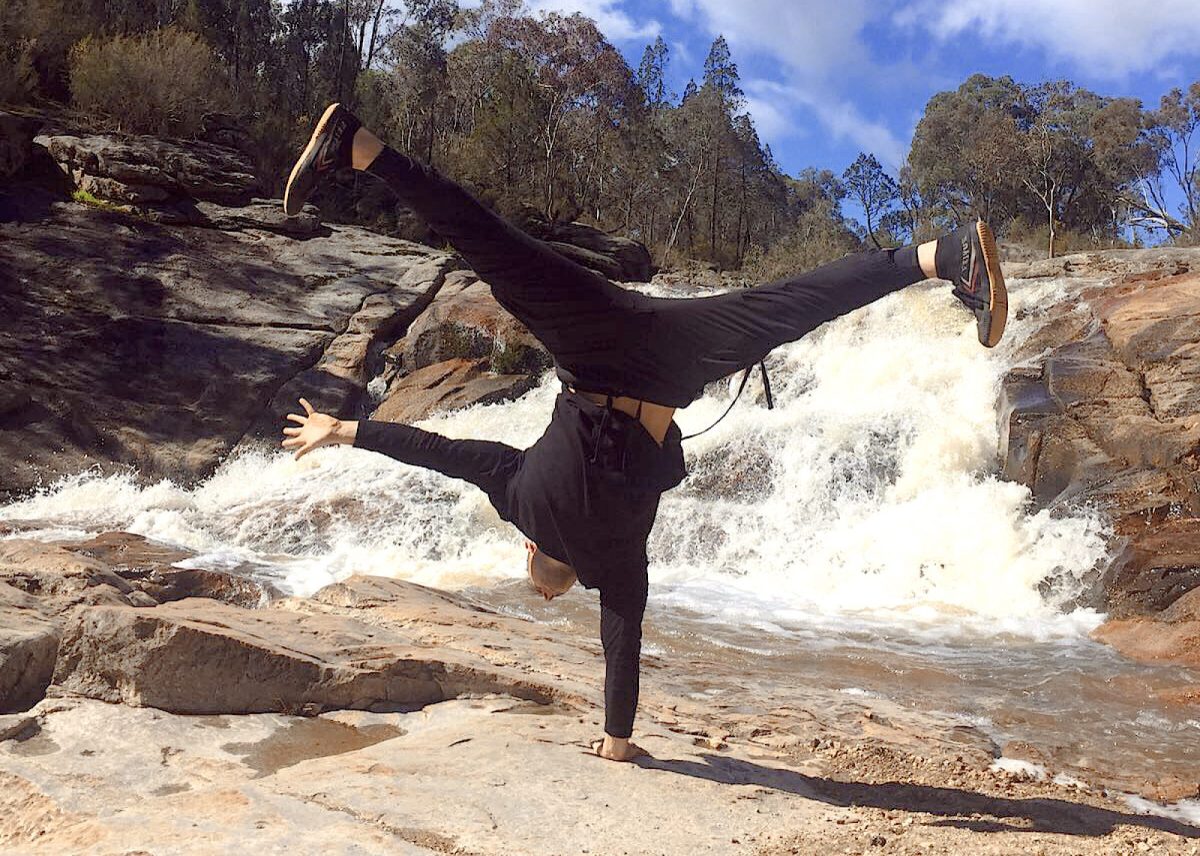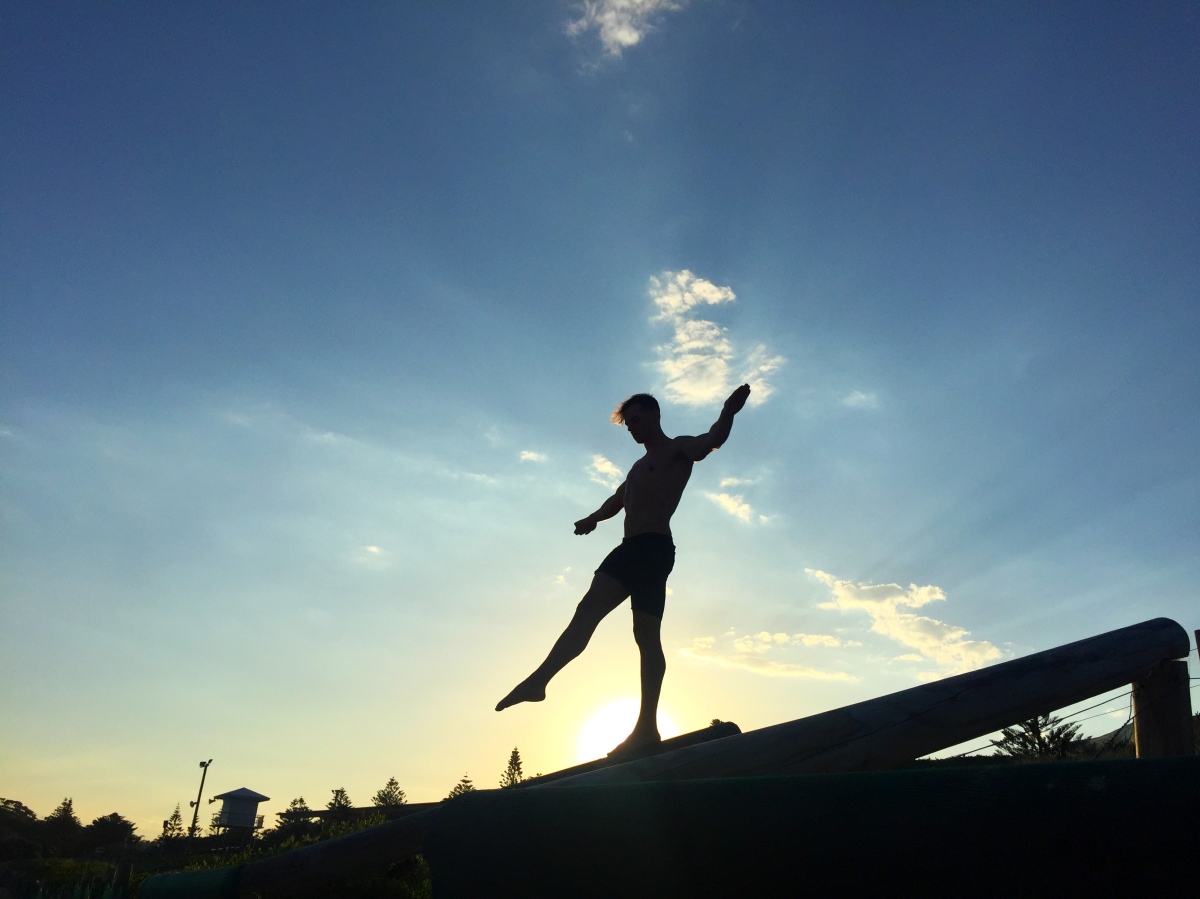To me, handstands are the perfect metaphor for learning, development, and self-improvement.
‘The only way to get better at handstands is handstands’. You can do as many drills or holds or stretches or whatever else that you want, but the only way to put time on your handstand max is to spend time (I’m talking cumulative hundreds of hours) doing handstands.
They teach you patience, because the progress is slow. So slow that you won’t notice it between days, or perhaps even weeks, only after months of dedicated, focussed, concerted practice will you see measurable results.
They are not something you can pick up and put down again. Even practicing them a few times a week is only enough to maintain them, not to improve them. So they require long term goal setting and determination. Determination which exists despite signs of progress. Determination which continues to exist solely through faith in ones ability to achieve an outcome. Determination like this is life changing, as is this long term pursuit of a goal based only on self-confidence. These are skills which are not just fostered by handstands, but demanded by them. They are skills which are so useful to a 21st century human, but there are so few areas in our lives which ask them of us, so there are so few opportunities we have to develop them ourselves – unless we give ourselves a project like handstand mastery.
Handstand improvement comes with routine, structure and planning. A few here or there, won’t cut it. Nor can you do more one day to make up for another day which you missed. Dedication counts. So does reliability, and having the ability to regularly commit to an act of self improvement, without making excuses.
At the beginning, handstands for me felt like something that ‘sucked but would be worth it one day’. Now, I am unattached to outcome. I do them for the process. I know that if I commit to the process, the outcome will one day arise. But this is no longer the goal. Even when I can one day do a 90 second handstand (the current goal), then I will start working on one-handed, and the journey simply begins again. The ultimate ultimate end goal – full and total freedom to move between a myriad of one arm balances – this is something which I realistically expect to achieve with a further 5-10 years of dedicated practice. To so many, this would be completely daunting. They hear that and balk. But I know that I will always be handstanding, for as long as I have hands with which to stand on, so I constantly refine. As long as I continue regularly, then I will always be better than I was last time. As long as I keep doing this indefinitely, which I likely shall as now I enjoy them, then I am likely to achieve handstand greatness one day in the far far off future.
When I was in year 12 and preparing for my final exams, the school kept bringing in all these motivational style speakers and people spouting this technique and that. We had to spend a week sitting through this and it was a total chore. But there is one thing which stuck with me. The triangle of skill cultivation. This applies to handstands, but again, to almost everything else in life as well.
The more you do X –> The better you get at X –> The more you enjoy X –> the more you do X
This just loops. And you aren’t in control of how good you are at something, or how much you enjoy it. The only one of these variables which you can change is how much you do something. The more you do it, the more the rest will come. Keep this up enough, suddenly you’ve reached mastery.
I came to the game late. Because I was bad at handstands then I never did handstands. Does this sound familiar? What things in your life have you always wanted to do, but never have because you weren’t good at them? You know that all you need to do to improve is start doing, start trying, but you probably haven’t. When I recognised this in myself I wasn’t sure if it was more fear of failure, or my own perfectionism. If I couldn’t be good at something, I didn’t want to do it at all. I realised both of these things were very immature, and that if I wanted the outcome (to be good at the thing), then the only path was to start trying. First I had to start being really, really bad. But I knew that if I was really bad for long enough, but kept going, eventually I wouldn’t be so bad anymore (maybe even awesome at it, eventually). After 24 years of this I decided that there was no time like the present and if I never started then I’d never arrive. It’s never too late. That whole shtick. So I did. And I sucked because, well, of course I did. It wasn’t for at least a month of throwing myself up unto my hands with no real plan or understanding, that I felt my first taste of balance. For a passing moment, I felt it. I felt connected and I felt where my weight was centered along the axis of my body, held suspended in time and space. I felt aligned, I felt my first handstand, I felt great, and then I felt the floor as I fell.
…Then I got back up, and felt what it was like to try it again. This time slightly better, this time with slightly more understanding.
The first thing you have to do is learn how to fall (life metaphors hellooooo). Some people are really good at this and can do it naturally. Others need to be taught and to learn. Falling is scary, but once you’ve done it enough you get good at it. Before you know how, you can barely do the move for fear of falling. Once you’ve fallen a few times, learned how, and learned how to pick yourself up again, the fear of the fall never again stops you from trying. Can you think of a time you learned to fail at something, and by learning first HOW to fail, suddenly it was easier to learn?
And here I am year and a half, maybe even two since I first endeavoured to learn handstands. Last night I held my first handstand for almost but not quite 30 seconds. Everything that I have learned and practiced and consolidated just clicked into place. I felt focussed, relaxed, and able. In that moment in my garage without a single witness in sight, I came so close to a brand new benchmark, a new goal, and found myself basking in supreme elation. No I didn’t pass 30, but it reminded me of how far I have come, and for that I felt humbled and grateful. It also reminded me how far there is that I could go and, instead of the daunting apprehension this understanding once brought, now this just fills me with excitement. Excitement and a quiet, optimistic determination.
Because now I just love the process. I handstand to handstand. I handstand to do it better than I did yesterday, to do this day after day. I consolidate what I know, I constantly learn, tweak and evolve. I try new things, I fail new things, but each fall is one step closer to my ever shifting goal on my journey to master something unmasterable.
The only way to get better at handstands is handstands.
The only way to get better at life is by living.

 There are so many facets to my identity. So many parts of my existence which are so uniquely ‘me’. One of my hardest journeys has been accepting that I cannot do everything which I want to do.
There are so many facets to my identity. So many parts of my existence which are so uniquely ‘me’. One of my hardest journeys has been accepting that I cannot do everything which I want to do.